PROTECT YOUR DNA WITH QUANTUM TECHNOLOGY
Orgo-Life the new way to the future Advertising by AdpathwayAllergens are all around us, from dust to mold to, of course, pollen. To minimize exposure in our immediate environments, growing selections that are less allergy-inducing make for easier enjoyment outdoors.
Plants with allergen qualities cause issues for sufferers at different times of year, with spring and fall being particularly active. Highly fragrant flowers also incite a reaction for some of us, so steering away from strong perfumes helps ease the allergic response. Those with toxicity in their milky sap can cause skin irritation for those with sensitivities.
To lessen allergies, we may miss out on some star seasonal performers, but plenty of flowers are ready to take their place. We’ll explore blooms that produce the most wind-borne pollen, as well as those with intense fragrances to skip if you have sensitivities.
Chrysanthemum
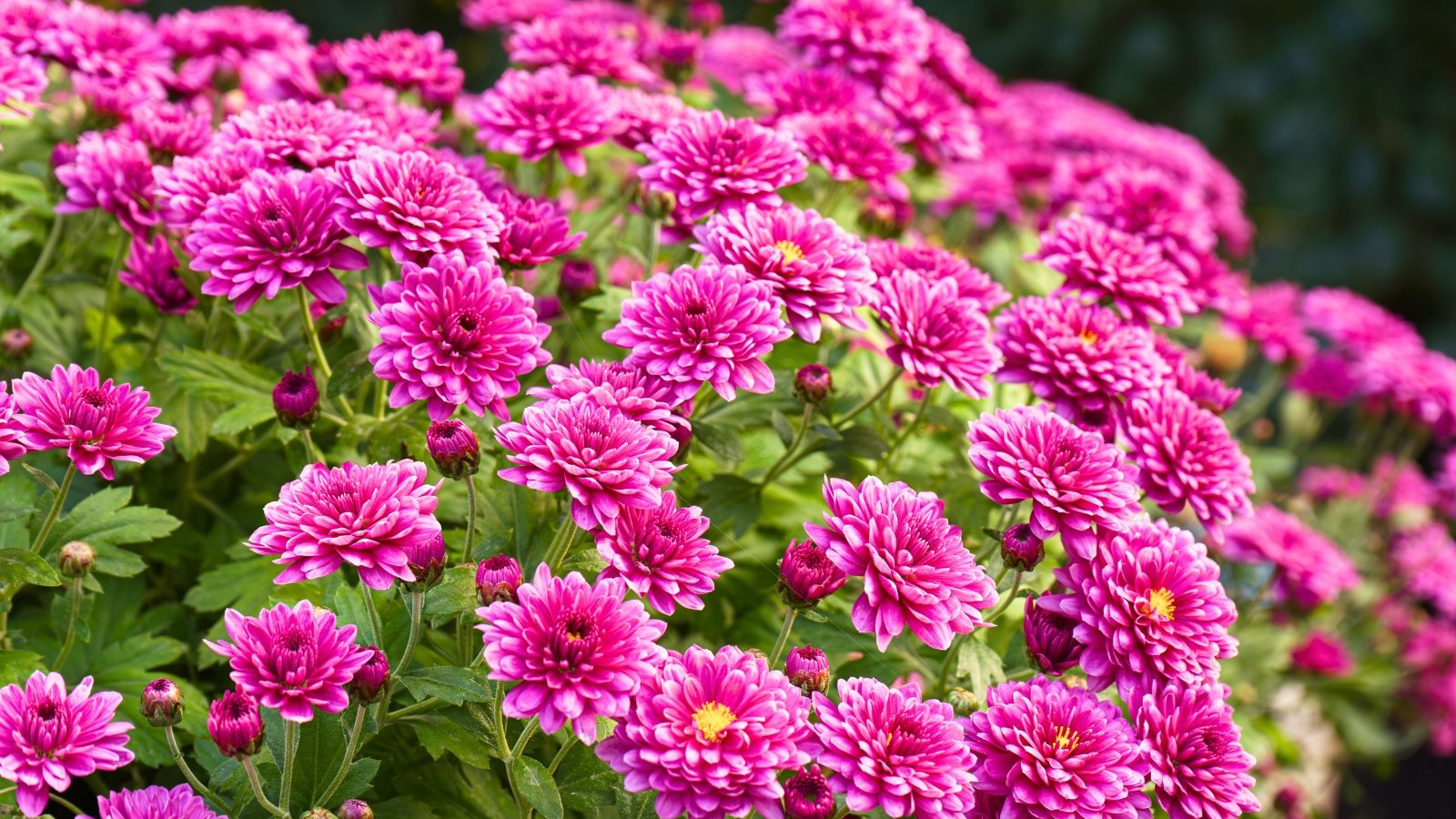 Bright autumn blooms reward gardens as temperatures drop.
Bright autumn blooms reward gardens as temperatures drop.The daisy family (Asteraceae) is known for producing high pollen that relies on wind for dispersal. As members of the aster family, chrysanthemums produce late-season pollen to drift between blooms at the end of summer and through fall (depending on the species’ bloom time).
Mums bloom profusely in rich hues until heavy frost. Scarlet, gold, orange, pink, or purple petals top stems with dark green, lobed leaves.
Perennial garden mums are cold-hardy and grow vigorously with a clumping habit. They grow best in moist, organically rich soils. The leafy stems and buds develop over the summer to surprise and delight as the days shorten and the weather cools.
In addition to their high pollen from a multitude of flowers, chrysanthemums can also cause contact dermatitis for some. Their leaves, stems, and petals contain irritant chemical compounds. If you have allergies and handle these flowers, be sure to wear gloves during pruning or flower arranging if you have sensitive skin.
Common Jasmine
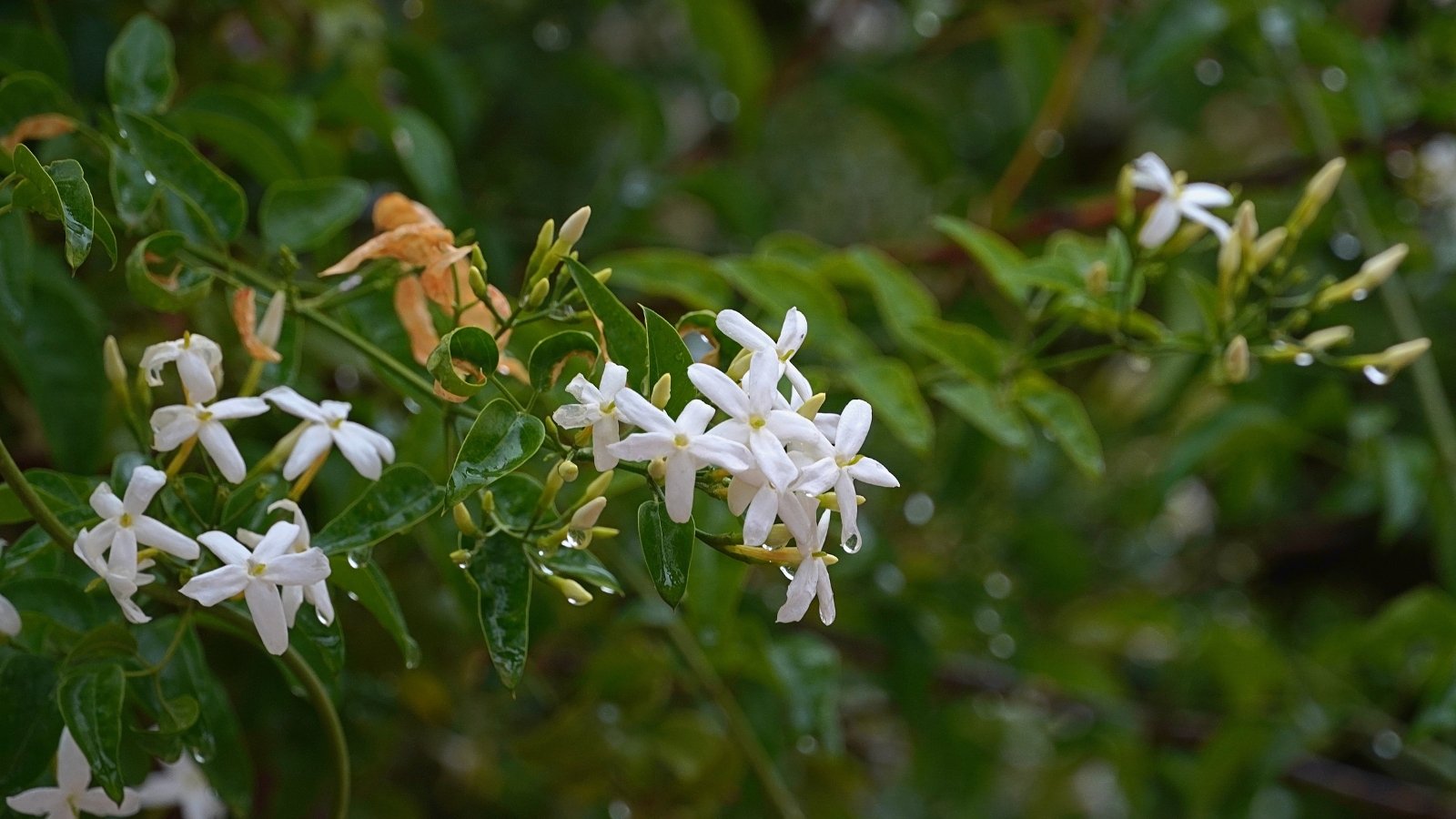 Evergreen stems twist and turn over fences beautifully.
Evergreen stems twist and turn over fences beautifully.Jasmine makes the list of flowers that contribute to allergies due to its decadent fragrance. A vigorous evergreen vine, jasmine produces loads of starry white or pink flowers from spring to fall.
Jasmine grows vertically to screen walls or highlight arbors. They also grow in pots to bring the fragrance to entryways and seating areas. Where not hardy, it overwinters indoors. But, to avoid the intensely sweet, floral, fruity fragrance in close proximity, opt for other flowering vines like clematis.
Because of its robust growth, jasmine takes heavy pruning in the fall after flowering. Cultivars like Jasminum officinale var. grandiflora have the same form and fragrance as the species but with a less vigorous growth habit.
Aster
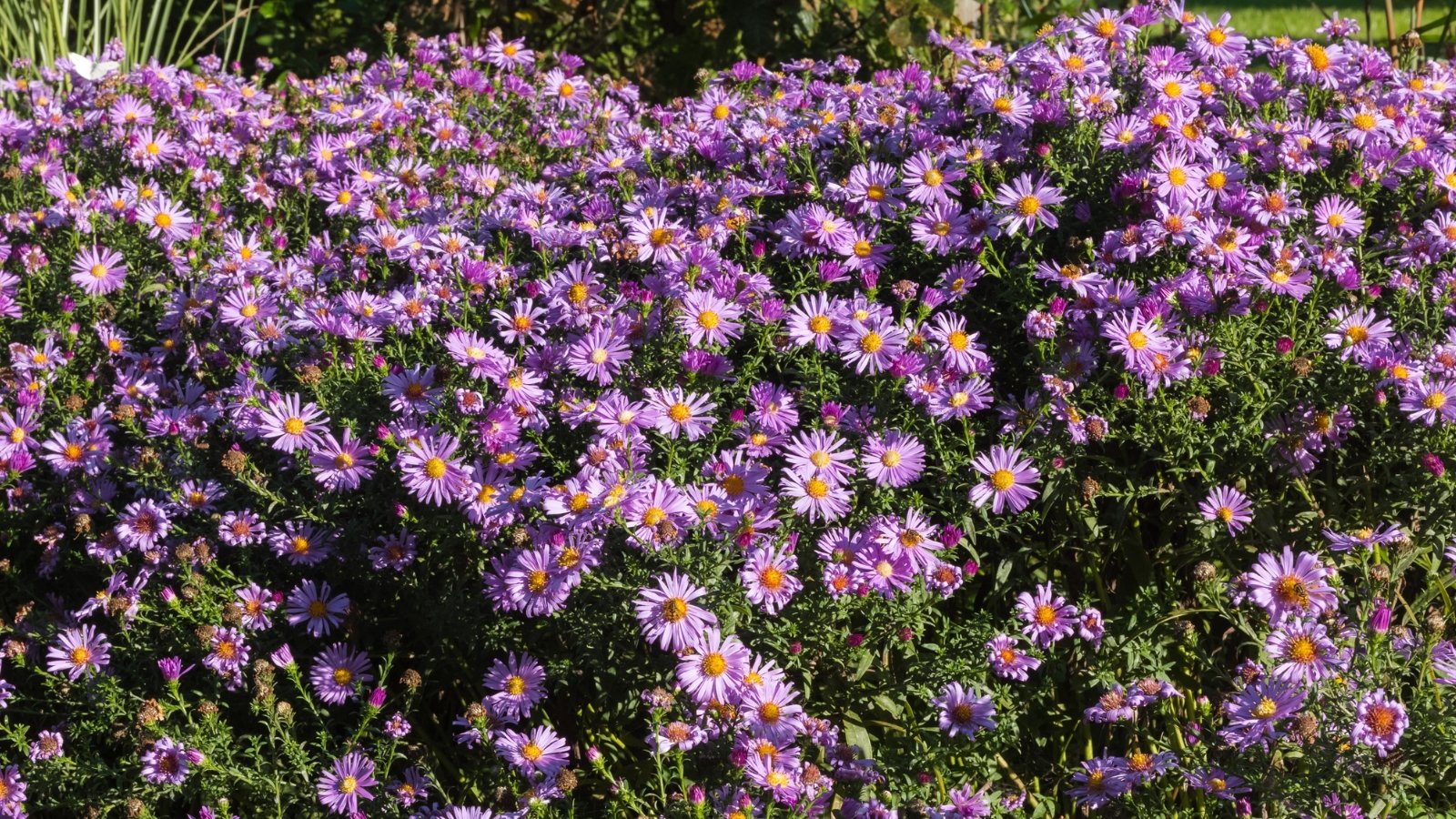 Purples and pinks blanket beds with seasonal charm.
Purples and pinks blanket beds with seasonal charm.Asters, the stars of the fall garden, produce a blanket of blooms in soft blues, purples, and pinks. From late summer into fall, the show unfolds, supporting pollinators and beneficial insects with the transitional season pollen and nectar.
Like others in the Asteraceae family, their overflowing blooms produce light pollen grains that drift in the air. To avoid adding to the pollen cloud, forego these flowers if you have allergies and opt for late-season blooms like salvias. The tubular flowers rely on the insects they support and bring vibrant tones through frost.
Feverfew
 Yellow-centered blooms brighten gardens from summer into frost.
Yellow-centered blooms brighten gardens from summer into frost.Feverfew joins its fellow daisy-family flowers in its allergy-inducing capabilities. The old garden herb yields bushels of petite daisy-like flowers from early summer through frost. White petals with yellow centers cover the mounding, feathery, aromatic foliage.
Feverfew is easy to grow and self-seeds readily. With pollen allergies, avoid these flowers and using the herb altogether. It has a long history in traditional teas as an herbal remedy, though some are allergic to its essential oils.
Feverfew is a short-lived perennial that grows for about two to three years. Another popular daisy family herb is chamomile. Like feverfew, it has wind-dispersed pollination from its ample blooms.
Sunflowers
 Summer gardens glow with towering sunflowers.
Summer gardens glow with towering sunflowers.Sunflowers bloom all summer with cheery faces that follow the sun when young and face east when mature. While not as sneeze-invoking as some others in the daisy family, they do have the potential to disperse granules into the air. Sunflowers primarily rely on bees for pollination, but because of their sheer size and amount of pollen, wind dispersal is possible.
While sunflowers are unparalleled with their bloom size and bright hues, alternatives like hibiscus (hardy rose mallow or tropical) or a mass of zinnias create a striking show. These, too, last until cool weather. Sow a mid-summer round of zinnias to keep the fresh flowers coming.
Shasta Daisy
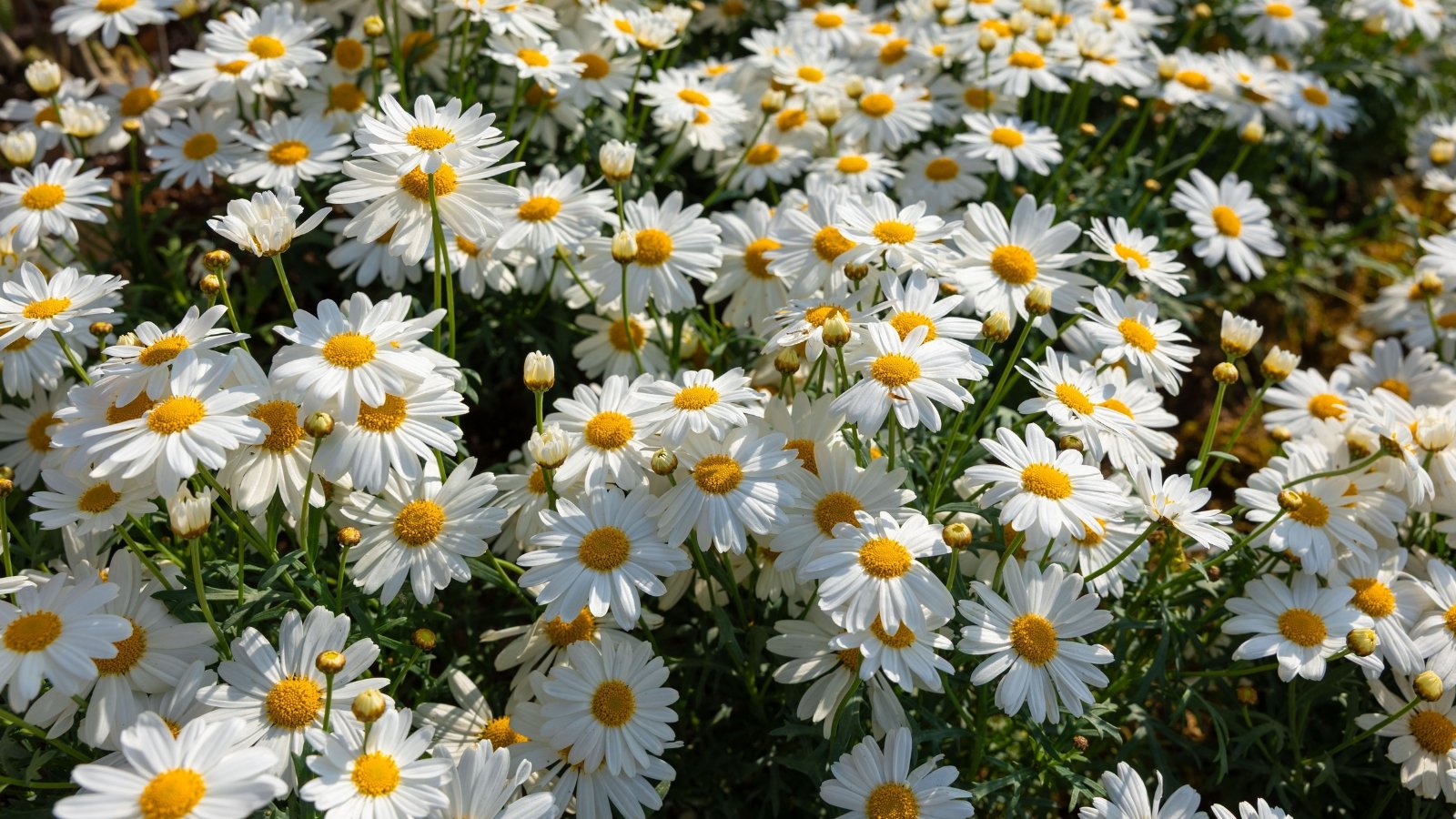 Double blooms hide centers, keeping pollen largely contained.
Double blooms hide centers, keeping pollen largely contained.We’ve mentioned that daisies produce a lot of wind-riding pollen, and Shasta daisies are among the group. The old-fashioned favorite perennials have cheerful white ray blooms with yellow centers and hit peak bloom in midsummer.
In lieu of true daisies, zinnias make an annual stand-in. Zinnias are members of the Asteraceae family but tend to be less problematic than those with finer-grained pollen. Peonies offer a perennial substitute, especially those with decadent layers of petals that conceal their pollen centers.
If you opt to grow Shasta daisies but want to reduce the pollen access, look for double-flowered varieties.
Lilies
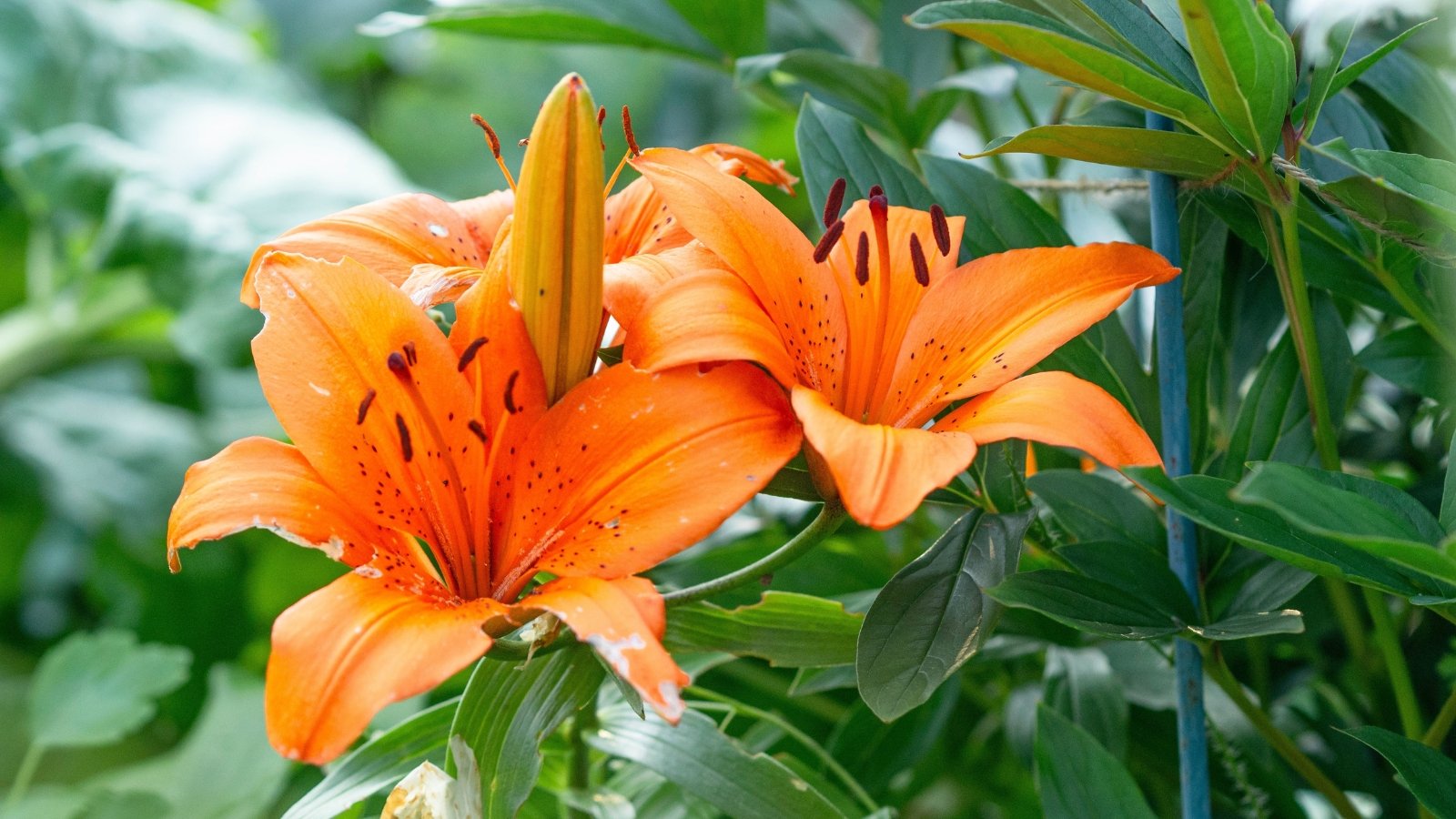 Trumpet blooms perfume summer mornings with dramatic flair.
Trumpet blooms perfume summer mornings with dramatic flair.Lilies make the list because of their heady fragrance. Their huge trumpet blooms herald the summer season with a big perfume to match. Their sweet floral aroma is the most intense on summer mornings and evenings to draw active pollinators.
From trumpet lilies to Asiatic lilies, the main feature is prominent, symmetrical blooms that emerge perpendicular to the stem. Lilium longiflorum (Easter lily), Lilium lancifolium (tiger lily), and Lilium superbum (Turk’s-cap lily) are among the most fragrant.
Reserve lilies for a more distant point in the border to enjoy their show while reducing the sensory exposure if too overpowering.
Dahlia
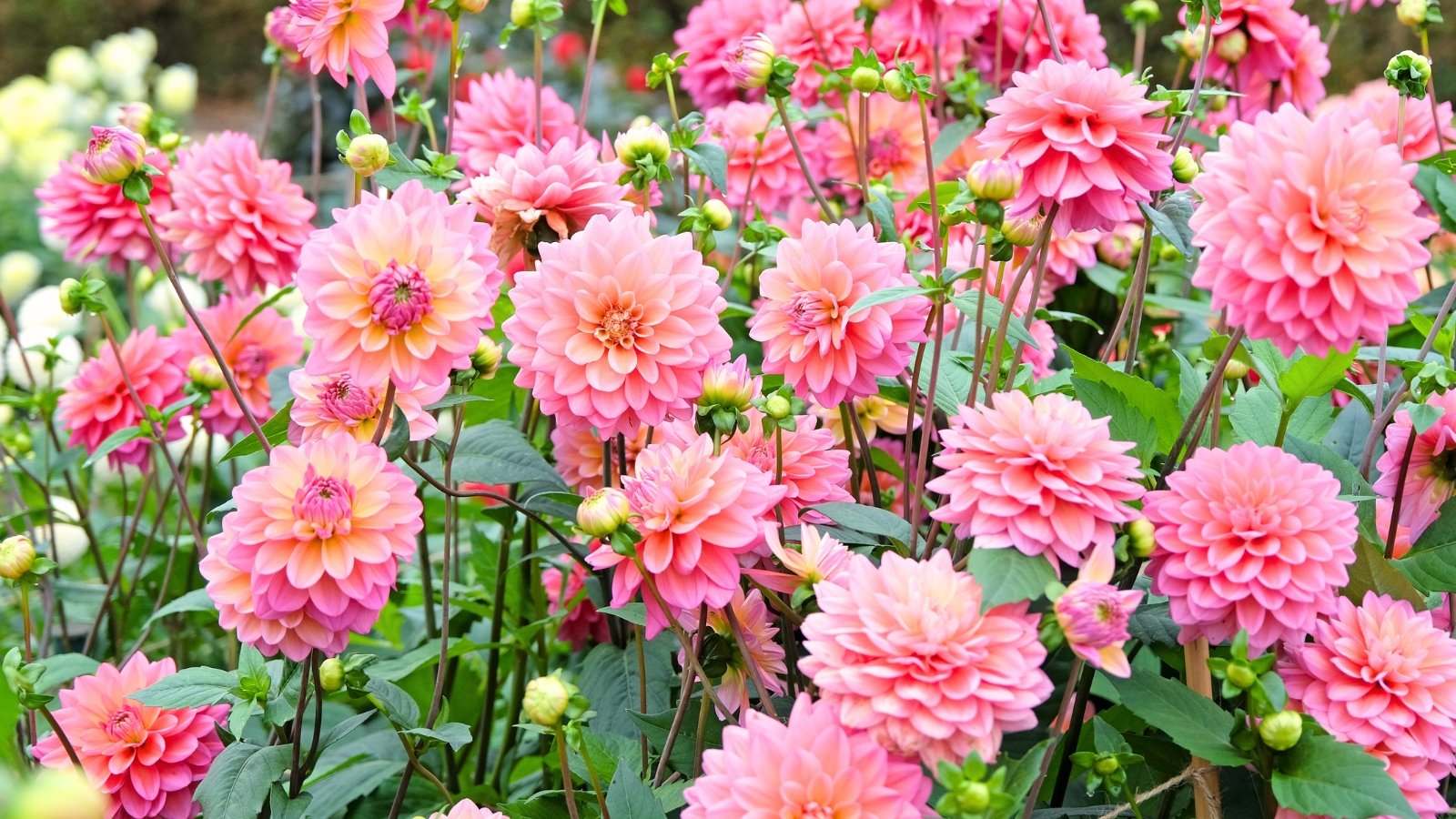 Dinner-plate dahlias steal attention at every garden glance.
Dinner-plate dahlias steal attention at every garden glance.Dahlias add drama to the summertime garden, but can also cause hay fever flare-ups with their large pollen centers. The stunning specimens belong to the Asteraceae family. Their beautiful, sizeable blooms in an array of colors and petal arrangements make them a standout in the garden and in fresh arrangements.
Dahlia flowers range in size from tiny pom poms to large dinner plates. If you can’t miss out on including the beauties, opt for double-flowered hybrids of these flowers for those with allergies. The American Dahlia Society classifies dahlias into groups based on their petal formation and intricate symmetry. Look to formal doubles to produce less pollen, with layers of tight petals.
Amaranth
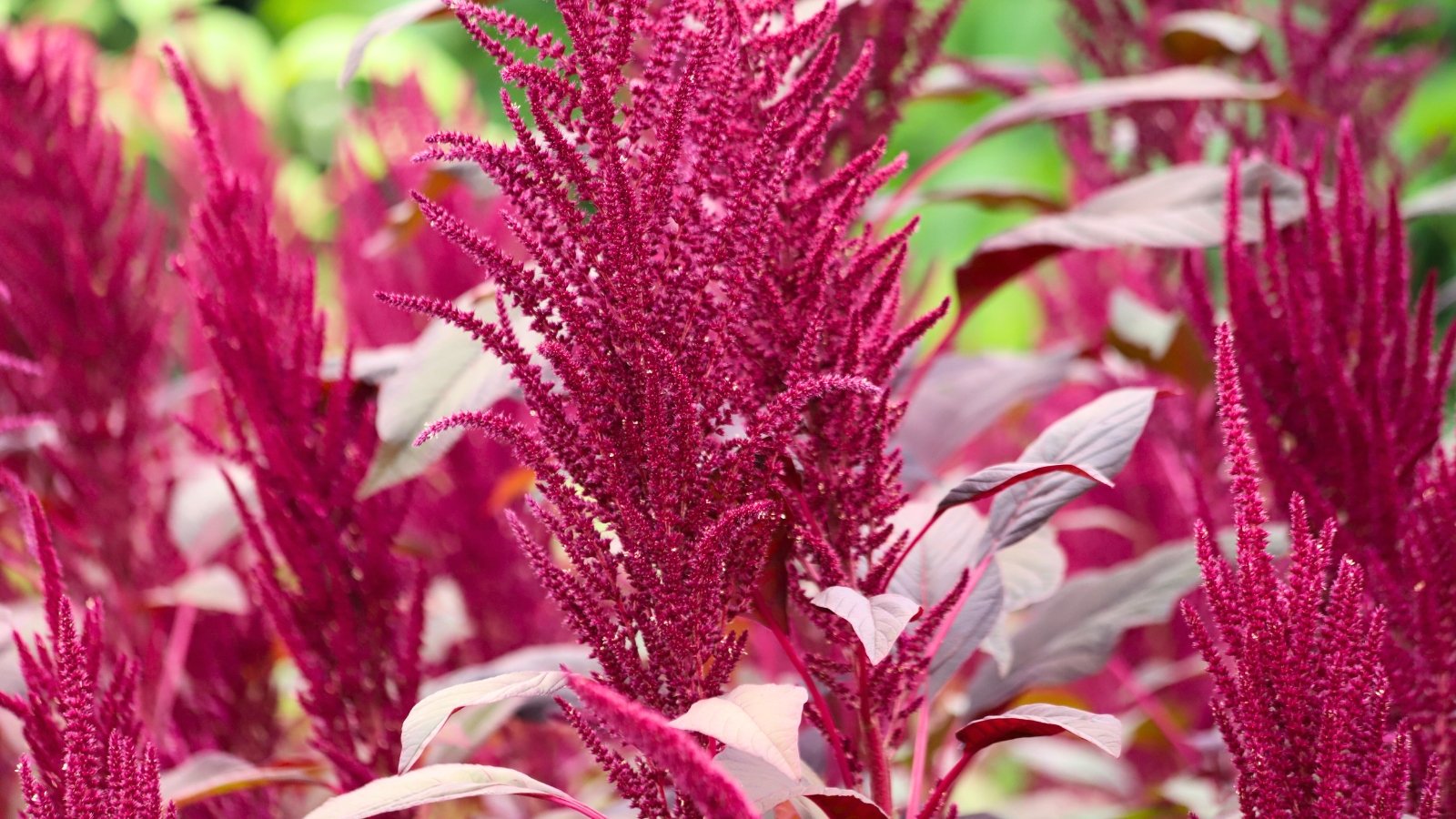 Magenta and coral spikes brighten fading summer beds.
Magenta and coral spikes brighten fading summer beds.Amaranth is an annual grain with unique tassel flowers and edible, high-protein seeds. The historic grain grows worldwide because of its nutritious seeds and easy growing.
Amaranth flowers from late summer through frost. Draping blooms in burgundy, gold, coral, and magenta suspend from arching stems. They add spectacular color and texture to fresh and dried florals.
Unfortunately, amaranth can cause sinus problems in two ways: first, through its pollen granules, and second, due to its seed grains. The seasonal pollen in summer contains a protein that can cause flare-ups. Ingesting the grain itself creates a response in some, with different proteins involved.
Allergy-Friendly Flowers
 Bees do the work, keeping pollen mostly contained.
Bees do the work, keeping pollen mostly contained.It may be optimistic to call them allergy-friendly, but to reduce reactions, look for flowers that are insect-pollinated rather than wind-pollinated.
Wind-pollinated plants release the granules in the breeze, where they float to neighboring blooms. Insect-pollinated selections rely on bees and other travellers to physically visit and collect grains to transfer between flower reproductive centers.
There are numerous options that make for fewer particles traveling in the air around us. Insect-pollinated flowers include:
- Azalea
- Begonia
- Camellia
- Clematis
- Hydrangea
- Impatiens
- Petunia
- Phlox
- Rose
- Salvia
- Snapdragon
- Vinca
- Viola
- Zinnia


 7 hours ago
4
7 hours ago
4


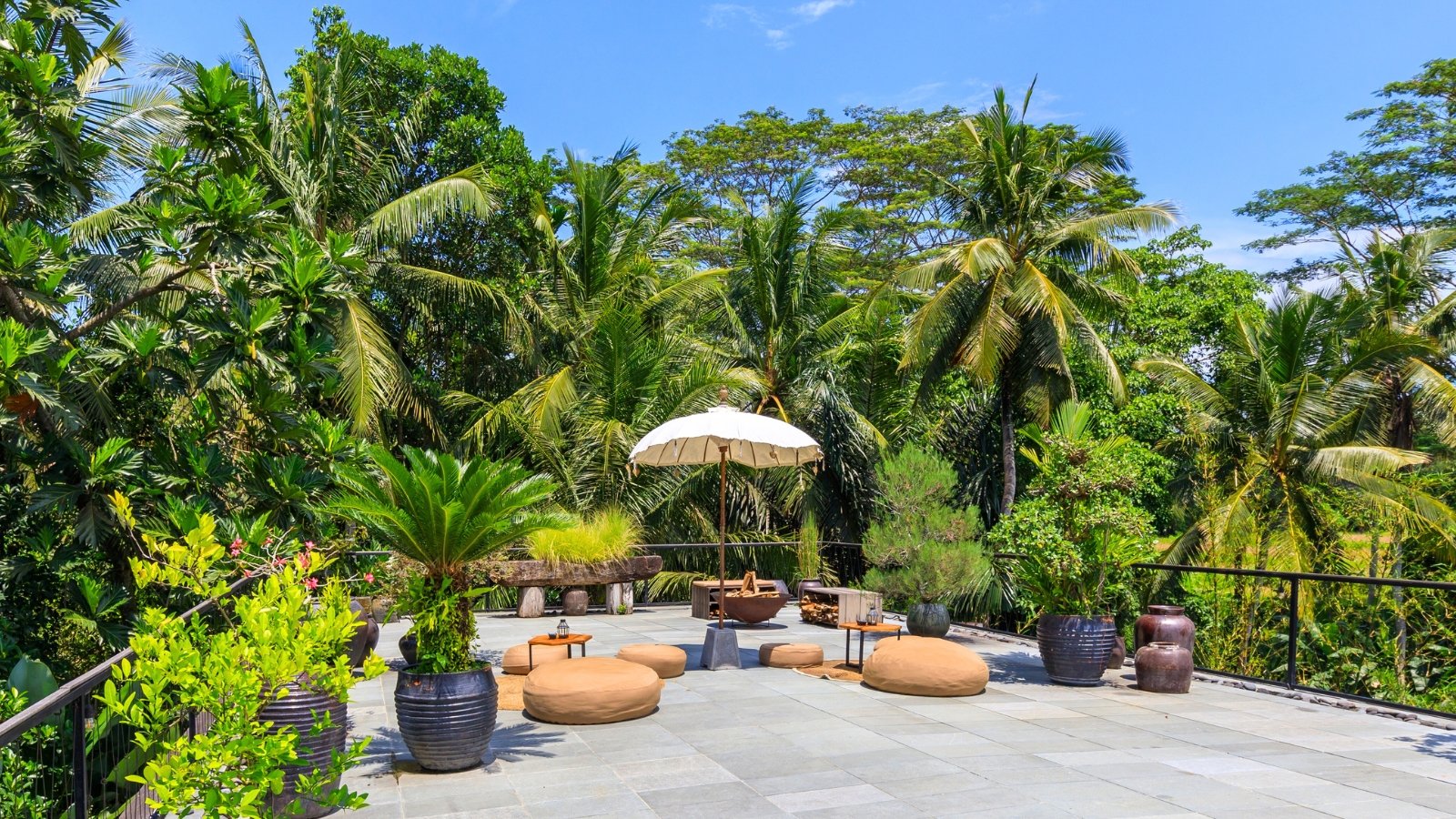
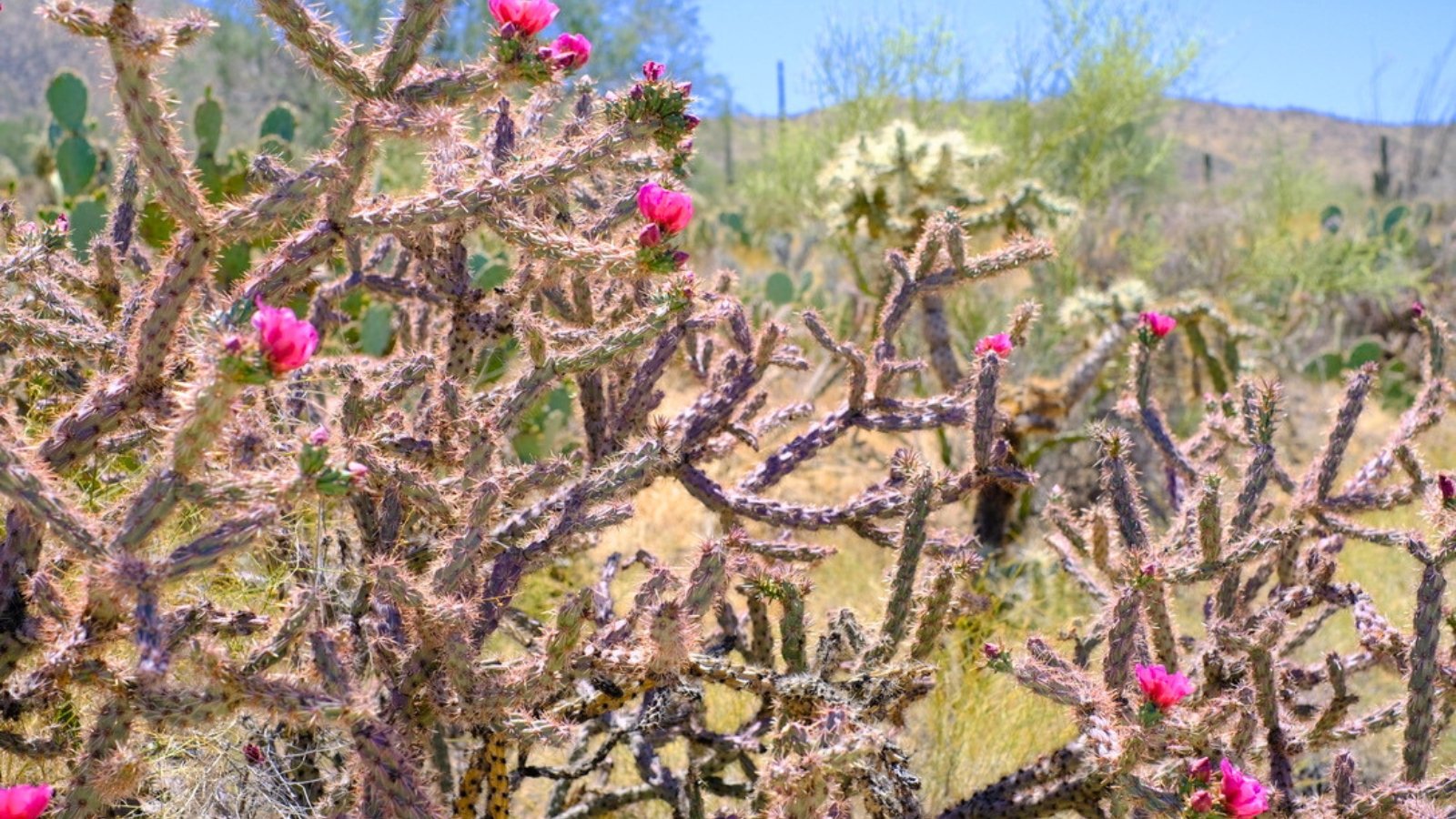

















 English (US) ·
English (US) ·  French (CA) ·
French (CA) ·